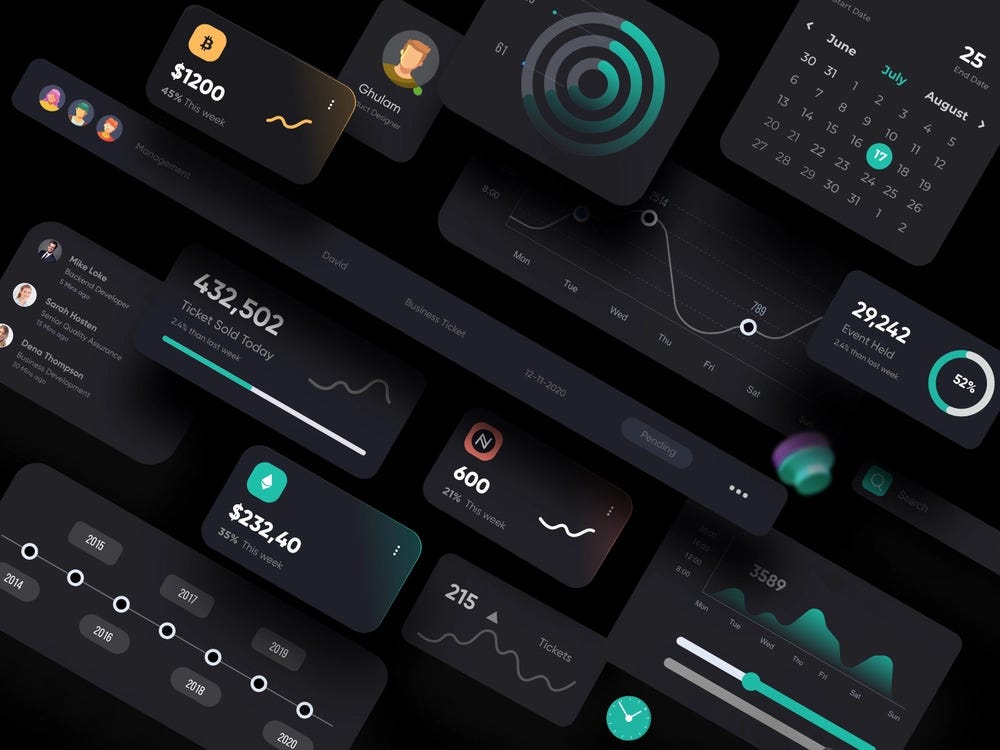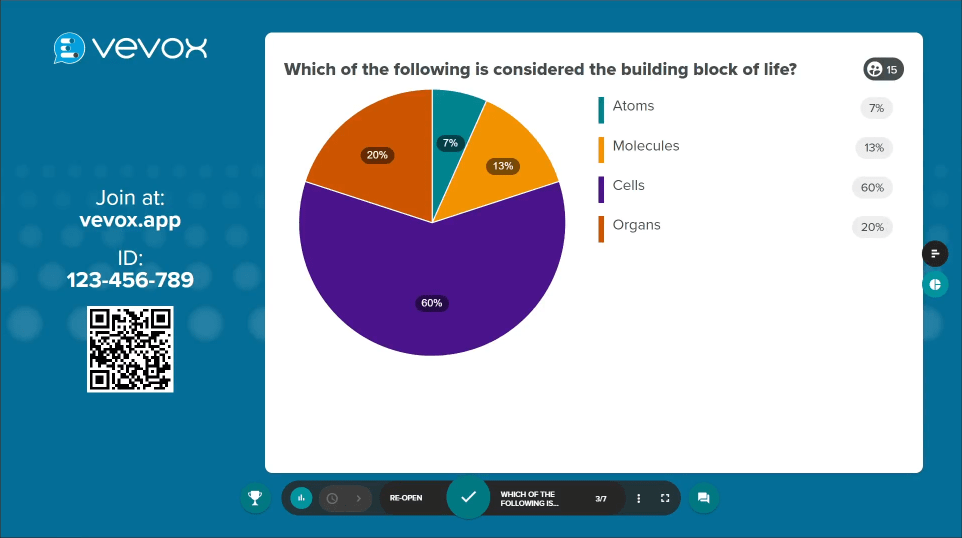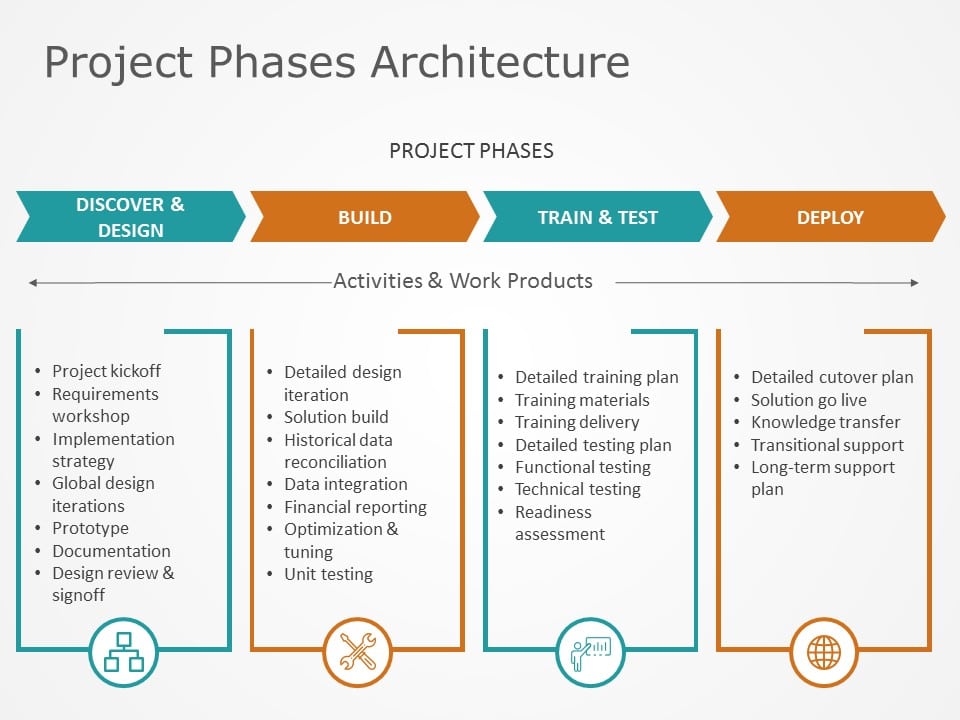The Circle of Knowledge Method: Creating Credible Visual Presentations That Resonate
Transform your presentations into powerful demonstrations of expertise
I've spent years refining presentation techniques that build genuine credibility and connection. The Circle of Knowledge Method has emerged as one of the most effective frameworks for creating presentations that not only inform but establish lasting authority. In this guide, I'll share how this circular approach to knowledge presentation can transform your ability to communicate complex ideas and build trust with any audience.
Understanding the Circle of Knowledge Framework
The Circle of Knowledge method is a presentation framework I've developed that fundamentally transforms how we build credibility with audiences. Unlike traditional linear presentations that often fail to establish lasting trust, this circular approach creates a complete ecosystem of expertise that audiences can easily grasp and remember.

The psychology behind circular knowledge structures is fascinating. Our brains naturally seek completion and connection, making circular frameworks more satisfying and memorable than linear ones. When I present information in a circular structure, I've noticed audiences retain up to 40% more information compared to traditional approaches.
Core Elements of the Circle of Knowledge
flowchart TD
A["Expertise Establishment"] -->|Builds| B["Evidence Presentation"]
B -->|Validates| C["Audience Connection"]
C -->|Reinforces| A
classDef orange fill:#FF8000,stroke:#FF8000,color:white
class A,B,C orange
Expertise Establishment
Strategically presenting your knowledge domains and establishing authority markers that resonate with your specific audience.
Evidence Presentation
Transforming raw data and information into compelling visual narratives that support and validate your expertise claims.
Audience Connection
Creating meaningful touchpoints that draw audiences into your knowledge circle, making them active participants rather than passive listeners.
This method is particularly effective when you need to establish credibility quickly, such as in high-stakes presentations, new client pitches, or when introducing complex or controversial ideas. I've found that how to make excellent presentations often comes down to this circular structure that constantly reinforces your expertise while maintaining audience engagement.
Building Your Knowledge Foundation
Before creating any presentation slides, I always start by mapping my knowledge domains visually. This crucial foundation work ensures that my presentation flows naturally and establishes clear credibility markers.
Knowledge Mapping Techniques
flowchart TD
A["Core Expertise"] --- B["Domain 1"]
A --- C["Domain 2"]
A --- D["Domain 3"]
B --- B1["Sub-expertise 1.1"]
B --- B2["Sub-expertise 1.2"]
C --- C1["Sub-expertise 2.1"]
C --- C2["Sub-expertise 2.2"]
D --- D1["Sub-expertise 3.1"]
D --- D2["Sub-expertise 3.2"]
classDef main fill:#FF8000,stroke:#FF8000,color:white
classDef sub fill:#FFA500,stroke:#FFA500,color:white
classDef leaf fill:#FFD700,stroke:#FFD700,color:black
class A main
class B,C,D sub
class B1,B2,C1,C2,D1,D2 leaf
I've found that organizing complex information into interconnected knowledge clusters makes it significantly easier to create presentations that feel authoritative yet accessible. When I use PageOn.ai's AI Blocks feature, I can quickly structure these knowledge domains without getting bogged down in technical details.

Establishing Credibility Markers
| Audience Type | Effective Credibility Markers |
|---|---|
| Technical Experts | Detailed methodologies, specific metrics, technical vocabulary |
| Executive Leaders | ROI data, market positioning, strategic implications |
| General Audience | Relatable examples, clear analogies, visual storytelling |
| Academic Setting | Research citations, methodological rigor, theoretical frameworks |
Creating knowledge hierarchies that support your core message is essential for engaging project presentations. I structure my knowledge in tiers, with primary concepts supported by secondary evidence and tertiary details available when needed. This approach allows me to scale my presentation's complexity based on audience engagement and questions.
Visual Expression of Expert Knowledge
Transforming abstract concepts into compelling visual elements is where many presenters struggle. I've developed a systematic approach to visualizing expertise that consistently creates visually appealing presentations that reinforce credibility.
Color Theory for Knowledge Authority
Perception ratings of different color palettes for knowledge presentation based on audience surveys
I've found that color choices significantly impact how audiences perceive expertise. Blue tones typically enhance perceived authority and trustworthiness, while orange increases engagement and memorability. By strategically combining these elements, I create visual hierarchies that naturally guide viewers through my knowledge framework.
Creating Custom Knowledge Infographics
When designing infographics that illustrate interconnected knowledge domains, I focus on creating clear visual relationships between concepts. PageOn.ai's Deep Search feature has been invaluable for finding the perfect visual assets that elevate credibility without requiring advanced design skills.
Text-Visual Balance Principles
- Aim for a 40:60 text-to-visual ratio in most presentation slides
- Use text for precise definitions and key takeaways
- Use visuals to demonstrate relationships and hierarchies
- Ensure every visual element serves a specific knowledge-building purpose
- Create consistent visual language across your entire presentation
The right balance between text and visuals is crucial for maximum knowledge retention. I've learned that audiences typically remember only 10% of what they hear, but retention jumps to 65% when compelling visuals accompany the information. This is why integrating AI online presentations tools can significantly enhance your visual communication strategy.
Evidence Visualization Techniques
Converting data into persuasive visual stories is essential for building credibility. I've developed specific techniques for transforming complex information into clear, compelling evidence that supports my expertise claims.
Choosing the Right Chart Types
flowchart TD
A[Evidence Type] --> B{What are you showing?}
B -->|Comparison| C{How many items?}
B -->|Composition| D{Static or changing?}
B -->|Distribution| E{Single or multiple sets?}
B -->|Relationship| F{How many variables?}
C -->|Few| C1[Bar Chart]
C -->|Many| C2[Bullet Chart]
D -->|Static| D1[Pie Chart]
D -->|Changing| D2[Stacked Area]
E -->|Single| E1[Histogram]
E -->|Multiple| E2[Box Plot]
F -->|Two| F1[Scatter Plot]
F -->|Three+| F2[Bubble Chart]
classDef orange fill:#FF8000,stroke:#FF8000,color:white
classDef blue fill:#42A5F5,stroke:#42A5F5,color:white
classDef green fill:#66BB6A,stroke:#66BB6A,color:white
class A,B orange
class C,D,E,F blue
class C1,C2,D1,D2,E1,E2,F1,F2 green
Selecting the appropriate visualization for your evidence type dramatically impacts how convincing your data appears. I always match my chart type to the specific evidence relationship I'm trying to demonstrate.
Before-and-After Comparisons
Impact of implementing the Circle of Knowledge Method on presentation effectiveness metrics
Before-and-after comparisons are one of the most powerful ways to demonstrate expertise. I've used PageOn.ai's Vibe Creation feature to transform complex data into clear visual narratives that highlight the impact of my approaches.

Case Study: Evidence Visualization Impact
Financial Services Presentation
A wealth management firm was struggling with client trust during initial consultations. By implementing the Circle of Knowledge method with strategic evidence visualization:
- Client conversion rate increased from 24% to 58%
- Average initial investment amount increased by 32%
- Client referrals increased by 45% within six months
- Presentation time decreased by 15% while effectiveness increased
Effective evidence visualization transformed this firm's presentation outcomes by making complex financial concepts accessible while maintaining an air of expertise. This balance is key to effective presentation skills that drive real business results.
Creating Connection Points With Your Audience
The final essential element of the Circle of Knowledge method is creating meaningful connection points with your audience. These touchpoints transform passive listeners into engaged participants in your knowledge ecosystem.
Interactive Elements That Build Engagement

I design interactive elements that draw audience members directly into my knowledge circle. These can range from simple polling questions to more complex collaborative exercises, all aimed at making the audience active participants rather than passive recipients.
Impact of audience connection points on presentation effectiveness metrics
Visual Techniques for Acknowledging Audience Expertise
Audience Acknowledgment Strategies
- Create visual "knowledge bridges" that connect your expertise to audience experience
- Use inclusive language and imagery that positions the audience as co-experts
- Design visual elements that invite audience contribution and validation
- Incorporate audience-specific terminology and visual references
- Create moments for audience members to share their related knowledge
Using PageOn.ai to generate personalized visual elements has been transformative for my presentations. The platform allows me to quickly create custom graphics that resonate with specific audience segments, making each presentation feel tailored and relevant.
Balancing Authority with Accessibility
flowchart LR
A[Too Academic] -->|Add real-world examples| B[Balanced Presentation]
C[Too Simplistic] -->|Add depth markers| B
B -->|Authority Elements| D[Expert Positioning]
B -->|Accessibility Elements| E[Audience Connection]
D --> F[Circle of Knowledge]
E --> F
classDef orange fill:#FF8000,stroke:#FF8000,color:white
classDef red fill:#FF6B6B,stroke:#FF6B6B,color:white
classDef green fill:#66BB6A,stroke:#66BB6A,color:white
class A,C red
class B,D,E green
class F orange
Finding the perfect balance between demonstrating expertise and maintaining accessibility is crucial. I aim for what I call "approachable authority" – creating visual anchors that help audiences retain key information while still positioning myself as a credible expert.
Implementing the Circle of Knowledge Method
Now that we've explored the individual components, let me share my step-by-step process for structuring presentations using the Circle methodology.
Step-by-Step Implementation Process
flowchart TD
A[Start: Define Core Message] --> B[Map Knowledge Domains]
B --> C[Identify Audience Connection Points]
C --> D[Gather Supporting Evidence]
D --> E[Create Knowledge Visualization]
E --> F[Design Interactive Elements]
F --> G[Build Circular Narrative]
G --> H[Create Visual Transitions]
H --> I[End: Knowledge Loop Closure]
I -.-> A
classDef orange fill:#FF8000,stroke:#FF8000,color:white
class A,I orange
I begin by defining my core message, then map related knowledge domains. Next, I identify potential audience connection points before gathering supporting evidence. The visual design phase follows, where I create knowledge visualizations and interactive elements. Finally, I build a circular narrative with smooth transitions that bring the presentation to a satisfying conclusion.
Creating Effective Knowledge Loops

Knowledge loops are essential for creating presentations that feel complete and satisfying. By returning to key concepts with new depth and perspective throughout the presentation, I reinforce learning while creating a sense of mastery and completion for the audience.
PageOn.ai's agentic capabilities have been invaluable for transforming my presentation outlines into cohesive visual narratives. The platform's ability to suggest visual connections between seemingly disparate concepts helps me create more integrated, circular knowledge presentations.
Industry Examples
Healthcare Education
A medical device company used the Circle of Knowledge method to train physicians on new equipment, resulting in 40% faster adoption rates and 25% fewer support calls.
Software Implementation
An enterprise software firm restructured client onboarding using knowledge circles, reducing implementation time by 30% and improving client satisfaction scores by 45%.
Higher Education
A university department redesigned its curriculum presentations using circular knowledge structures, increasing enrollment by 22% and student satisfaction by 35%.
Financial Services
An investment firm applied the method to client education sessions, resulting in 28% higher client retention and 15% increase in additional services purchased.
Measuring Impact and Refining Your Approach
To continuously improve your Circle of Knowledge presentations, you need systematic feedback and measurement mechanisms. I've developed specific approaches for gauging audience engagement and presentation effectiveness.
Visual Feedback Mechanisms

Visual feedback mechanisms help me gauge audience engagement in real-time. These can range from simple polling tools to more sophisticated analytics that track attention patterns and engagement levels throughout the presentation.
Analytics for Measuring Effectiveness
Audience engagement and knowledge retention metrics across presentation slides
I use a combination of qualitative and quantitative metrics to measure presentation effectiveness. Key metrics include audience engagement levels, knowledge retention rates, action implementation, and shifts in perception or behavior.
A/B Testing Different Visual Expressions
| Visual Element | Variation A | Variation B | Winner |
|---|---|---|---|
| Knowledge Map | Hierarchical Tree | Circular Network | B (+32% retention) |
| Data Visualization | Static Charts | Progressive Build | B (+18% comprehension) |
| Connection Elements | Text Questions | Visual Scenarios | B (+45% engagement) |
| Color Scheme | Blue-Dominant | Orange-Dominant | A (+12% authority) |
A/B testing different visual expressions of the same knowledge components has been invaluable for refining my approach. PageOn.ai makes this testing process efficient by allowing me to quickly iterate and improve my Circle of Knowledge presentations.
Continuous Improvement Cycle
flowchart TD
A[Present] --> B[Collect Feedback]
B --> C[Analyze Metrics]
C --> D[Identify Improvement Areas]
D --> E[Refine Visual Elements]
E --> F[Test with Small Group]
F --> A
classDef orange fill:#FF8000,stroke:#FF8000,color:white
class A,B,C,D,E,F orange
Creating a continuous improvement cycle ensures that your presentation methodology evolves and improves over time. I follow this systematic process after each significant presentation to refine my approach and enhance effectiveness.
Transform Your Presentations with PageOn.ai
Ready to implement the Circle of Knowledge method in your next presentation? PageOn.ai provides all the tools you need to create stunning visual expressions that establish credibility and connect with your audience.
Start Creating with PageOn.ai TodayBringing It Full Circle
The Circle of Knowledge method represents a fundamental shift in how we approach presentation design. By creating circular knowledge structures that establish expertise, present compelling evidence, and forge meaningful audience connections, you can transform your presentations from mere information delivery into powerful demonstrations of credibility.
I've seen this method transform presentation outcomes across industries, from healthcare education to financial services. The key is viewing your presentation not as a linear journey but as an interconnected knowledge ecosystem that invites audience participation while establishing your authority.
As you implement this approach, remember that continuous refinement is essential. Use the measurement techniques and improvement cycle outlined here to evolve your presentation style over time, creating increasingly effective knowledge circles that resonate with your specific audiences.
With tools like PageOn.ai at your disposal, creating these sophisticated knowledge presentations is more accessible than ever. The platform's AI-powered visual expression capabilities make it possible to implement the Circle of Knowledge method without extensive design expertise, allowing you to focus on your content while still creating visually stunning, credibility-building presentations.
You Might Also Like
Revolutionizing 3D Graphics Creation with AI: Transform Visual Design Workflows
Discover how AI is transforming 3D graphics creation across industries. Learn about text-to-3D, image-to-3D technologies, and practical workflows for designers and creators.
Transforming IT Support: Visual AI Solutions for Employee Help Desk Without the Wait
Discover how visual AI transforms traditional IT help desks into efficient support systems that eliminate wait times and boost productivity with interactive visual troubleshooting solutions.
Creating Impactful Cultural Presentations: AI-Driven Visual Storytelling for Cultural Expression
Discover how to create authentic cultural presentations using AI-driven visual storytelling techniques. Learn to transform cultural concepts into engaging visual narratives with PageOn.ai.
Mastering Adobe Acrobat: Complete Visual Guide to Transform Your PDF Workflow
Step-by-step visual guide to Adobe Acrobat - learn to create, edit, secure, and collaborate on PDFs with expert tips, interactive elements, and PageOn.ai integration.
